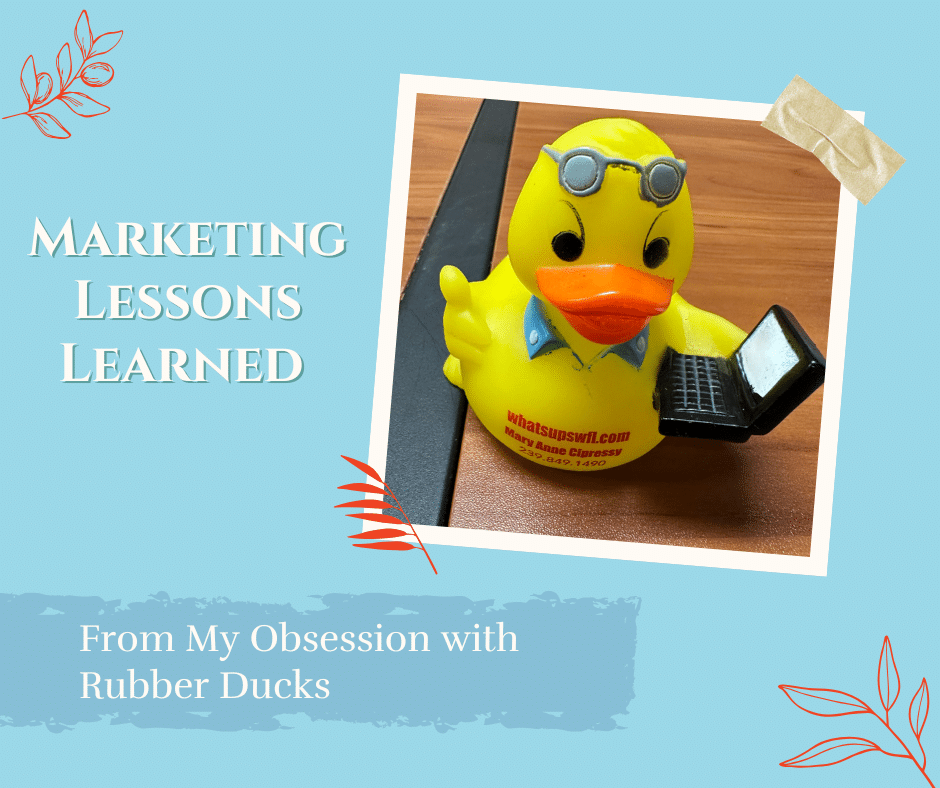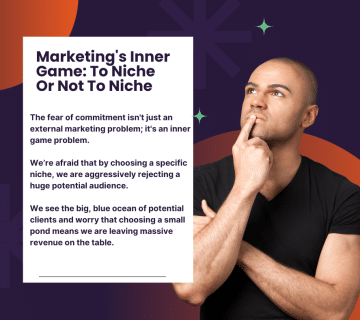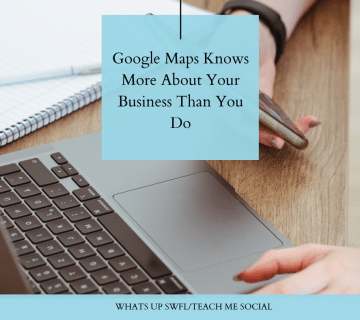Marketing lessons and rubber ducks, what could they have in common?
I’ll admit it: I have a slightly ridiculous obsession with rubber ducks. My office isn’t just a place for strategy sessions and client calls; it’s a floating armada of plastic bath toys—from the classics to ducks dressed as ninjas and cowboys.
While most people see a simple novelty item, I see a masterclass in marketing.
These brightly colored, mass-produced bath toys hold surprisingly profound lessons for any small business owner struggling with visibility, branding, and customer loyalty. Forget the latest LinkedIn guru; the real wisdom is bobbing in my bathtub.
Here are the three most surprising marketing lessons I’ve learned from my rubber duck obsession.
- The Power of Absolute Consistency: You Know Exactly What You’re Getting
The classic rubber duck is an icon because it hasn’t changed. It’s instantly recognizable: bright yellow, orange beak, simple eyes. It delivers on one simple promise: it floats.
Most small businesses are constantly chasing shiny objects, changing their brand colors, shifting their logo, or drastically altering their services every six months. This confuses the customer.
The Duck Lesson: Consistency builds trust. People don’t have to work hard to figure out what you are or what you do. Lock down your core message, your visual brand, and the single promise you always deliver on. Make it so consistent that a client can instantly spot you in a sea of competition.
- Niche Down, Then Personalize: The Ninja Cowboy Effect
Here’s where it gets interesting. While the classic duck is the gold standard, the market is full of themed ducks: a duck dressed like a vampire, a duck that plays a banjo, a duck in a superhero costume.
They started with a clear product (a duck) but niched down to serve highly specific, often quirky, interests (a “geek duck” for a programmer, or a “chef duck” for a foodie).
The Duck Lesson: Niche down, then deepen the connection. Don’t just serve “small businesses.” Serve “small-town dental practices” or “indie coffee shop owners.” Once you niche, your marketing can take on a specific, recognizable costume (your voice, your case studies, your solutions) that speaks directly to that small, dedicated fan base. You become their Ninja Cowboy Duck.
- The Low Barrier to Entry: Simple Fun Gets Shared
No one needs a rubber duck. They are a purely frivolous, inexpensive item. But people buy them, gift them, and share photos of them. Why? Because they are a low-commitment source of simple, unexpected joy.
Many small businesses make their marketing feel like a massive chore. They demand a 30-minute consultation or require a lengthy application just to get a quote. This is a huge barrier.
The Duck Lesson: Your entry point should be fun, free, and non-committal. Give your audience a “rubber duck” experience first. This could be a free, 5-minute audit tool, a hilarious, relatable video, or a simple one-page checklist. Give them something that is easy to consume, provides a little dose of joy (value), and costs them nothing but a minute of their time. This builds goodwill and gets your brand shared organically.
The success of the simple rubber duck proves that great visibility isn’t about complexity or cost. It’s about being consistently recognizable, deeply relevant to a niche, and an easy source of delight.
What marketing lessons do you think you received from our rubber duck?
Want to turn your business into the kind of recognizable icon that people can’t help but talk about? Let’s apply some of that yellow, buoyant logic to your marketing strategy.







